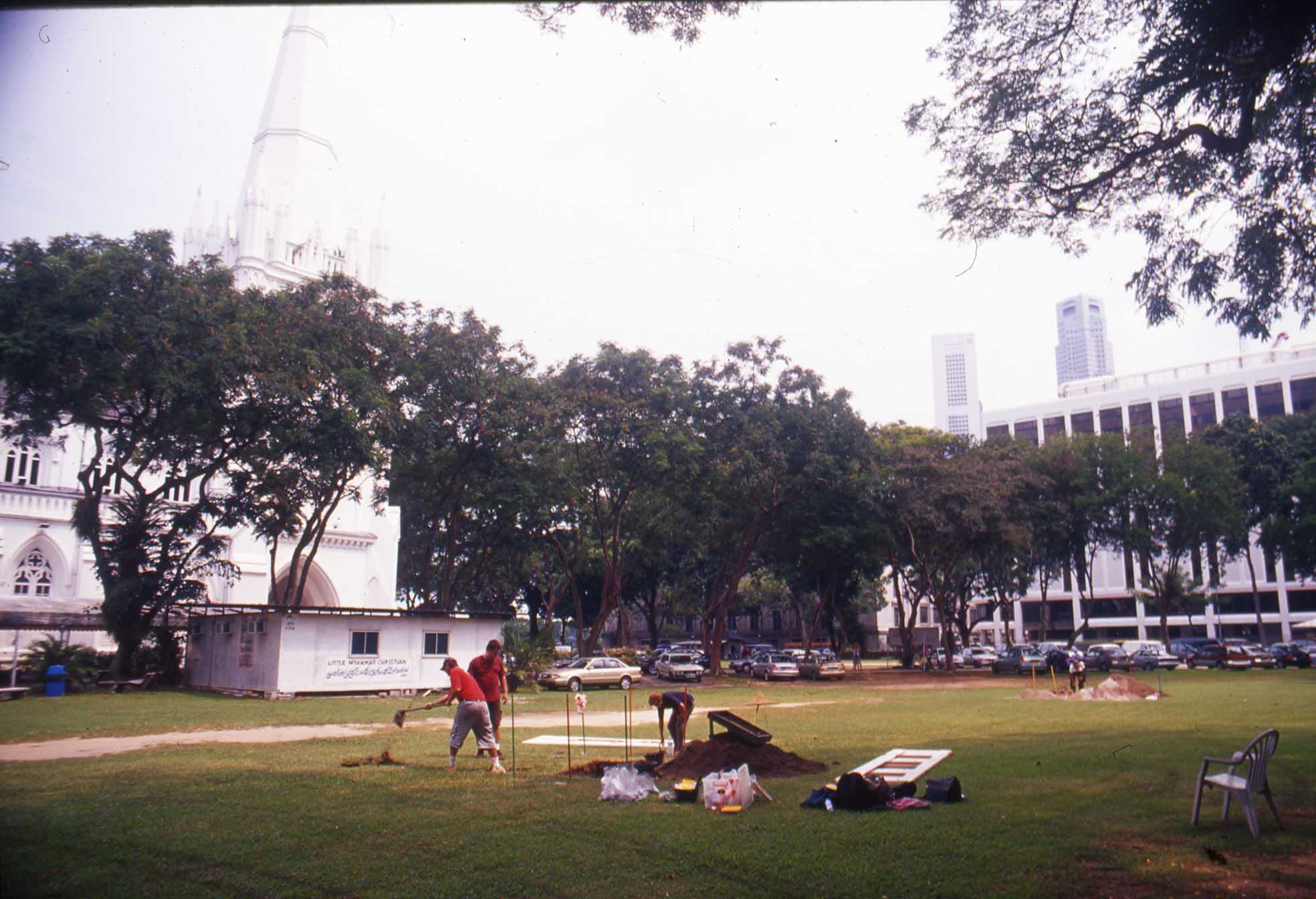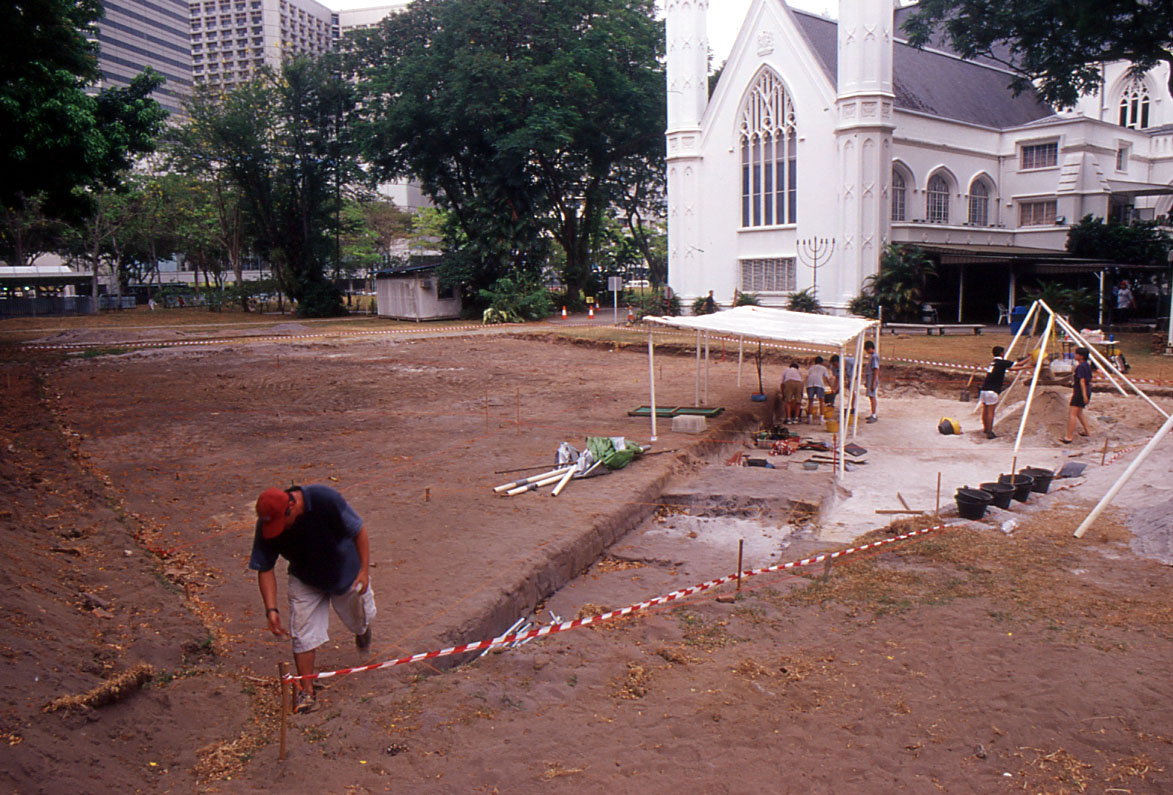In 2003 Prof. John Miksic was informed by a member of the church congregation that St. Andrew’s Cathedral was planning to construct an underground auditorium on the west lawn of the church, between the cathedral and North Bridge Road. The planned construction would occupy about 240 square meters. Prof. Miksic quickly established contact with church officials including Deaconess Bessie Lee and Mr. Hambali, and held a preliminary meeting with them on 13 March 2003 to discuss the possibility of conducting an archaeological project on the location which was to be disturbed. During the following week Prof. Miksic and his team surveyed the area and laid a plan for the areas to be prioritized. At that time it was not possible to determine precisely how long the team would be able to work. A preliminary plan was presented to the church in April 2003.
Grants from the National Heritage Board, the Asia Research Institute of the National University of Singapore, and American Express Corporation funded the projects. Upon completion of the various requests for permits on September 15, 2003, excavation began the next day. Research continued until April 10, 2004 after 177 days of excavations. Although excavation had to be halted on that date in order to enable the contractor to begin construction of the auditorium, the contractor transported some soil from the site to the east side of the Cathedral grounds between the church and the Padang. There the soil was sifted and more artifacts were recovered. These have no stratigraphic provenance, but they are known to have been recovered from the same area as the other items which were excavated in situ, and thus have scholarly value.
The St. Andrew’s site was of considerable archaeological interest. At that time archaeological research had been conducted at Fort Canning, Parliament House Complex, Istana Kampung Gelam, Colombo Court, Bras Basah Park, Old Parliament House, and Empress Place. A brief (two week) excavation was carried out on the Padang near the Singapore Cricket Club at the same time as the negotiations with the Cathedral were in progress. Other than IKG, the other sites excavated all lie along the Singapore River. It was a matter of importance to determine the extent to which the 14th-16th century settlement extended as far north as the Old Malay Wall (now Stamford Road), and if that were true, whether the nature of the occupation was similar to that along the river.

